Words John Alexis B. Balaguer
Images Pinto Art Museum
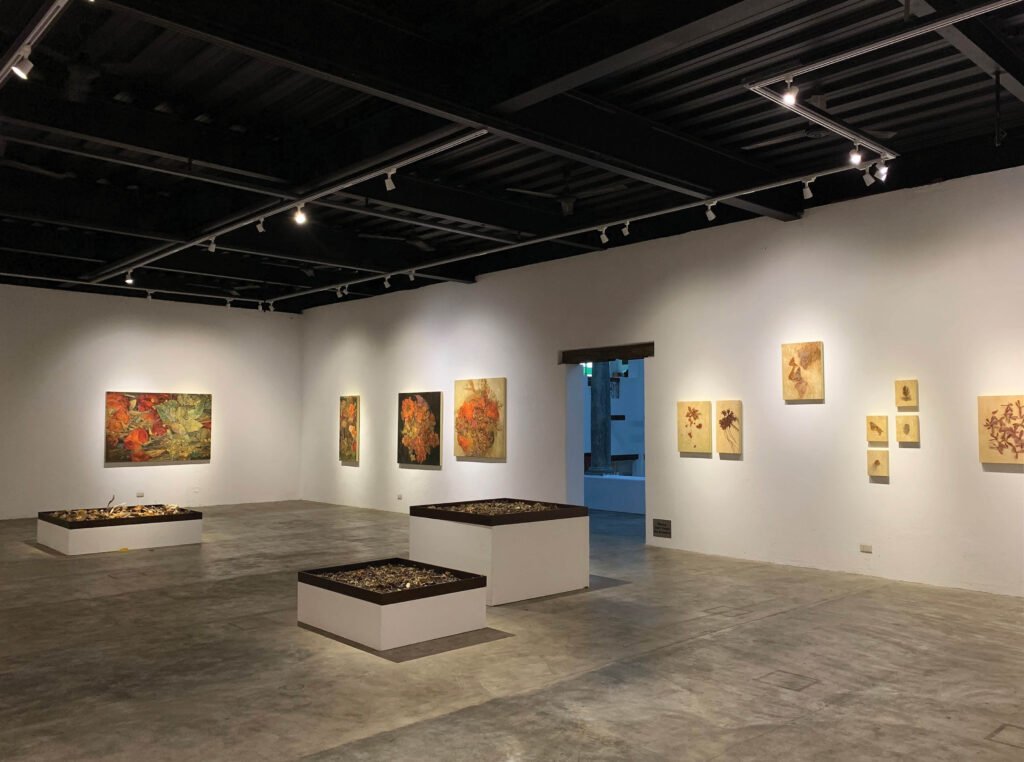
There is a certain charm to keeping records. Journaling, taking photographs, making visual diaries, or collecting souvenirs have always been ways of preserving stories of travel, events, or people. Some might keep items for sentimentality, while others to preserve personal connections to significant moments long passed. For visual artist Shanna Orencio (b. 1995), the fixation of holding on to memories was kindled by witnessing her grandmother succumb to Alzheimer’s disease. As a teenager, Orencio began gathering random memorabilia in boxes for safekeeping. “There is a fear of someday, I myself will succumb to that fate,” Orencio confesses, “and when I think of her, I remember her love of gardening and plants.”
Orencio’s fifth solo exhibition “To put, to gather, and to put together” showcases oil paintings depicting foraged natural elements such as dried flora, carapaces of insects, as well as installation works of the found material in various states of decay. The exhibition which opened from August 15 to October 24, 2021 at Pinto Art Museum’s Ilustrado I gallery is the artist’s intimate approach to keeping a visual record of memories of isolation and instances of connection within the pandemic time. The works, according to the artist, represent “a certain day, a person, or a place; put together to form a portrait of what used to be.”

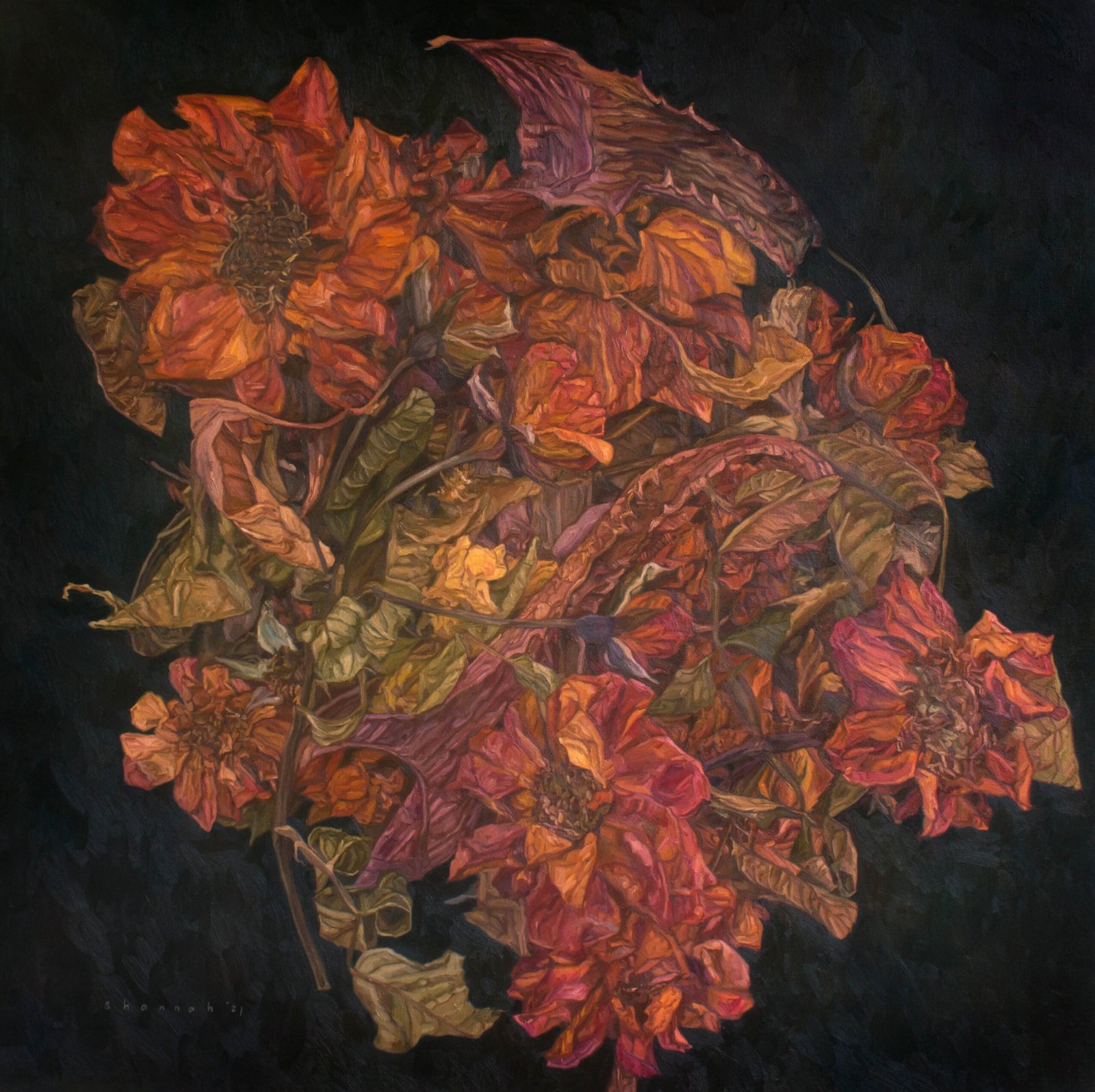
A house-warming gift, oil on canvas. 48 x 48 in, 2021 
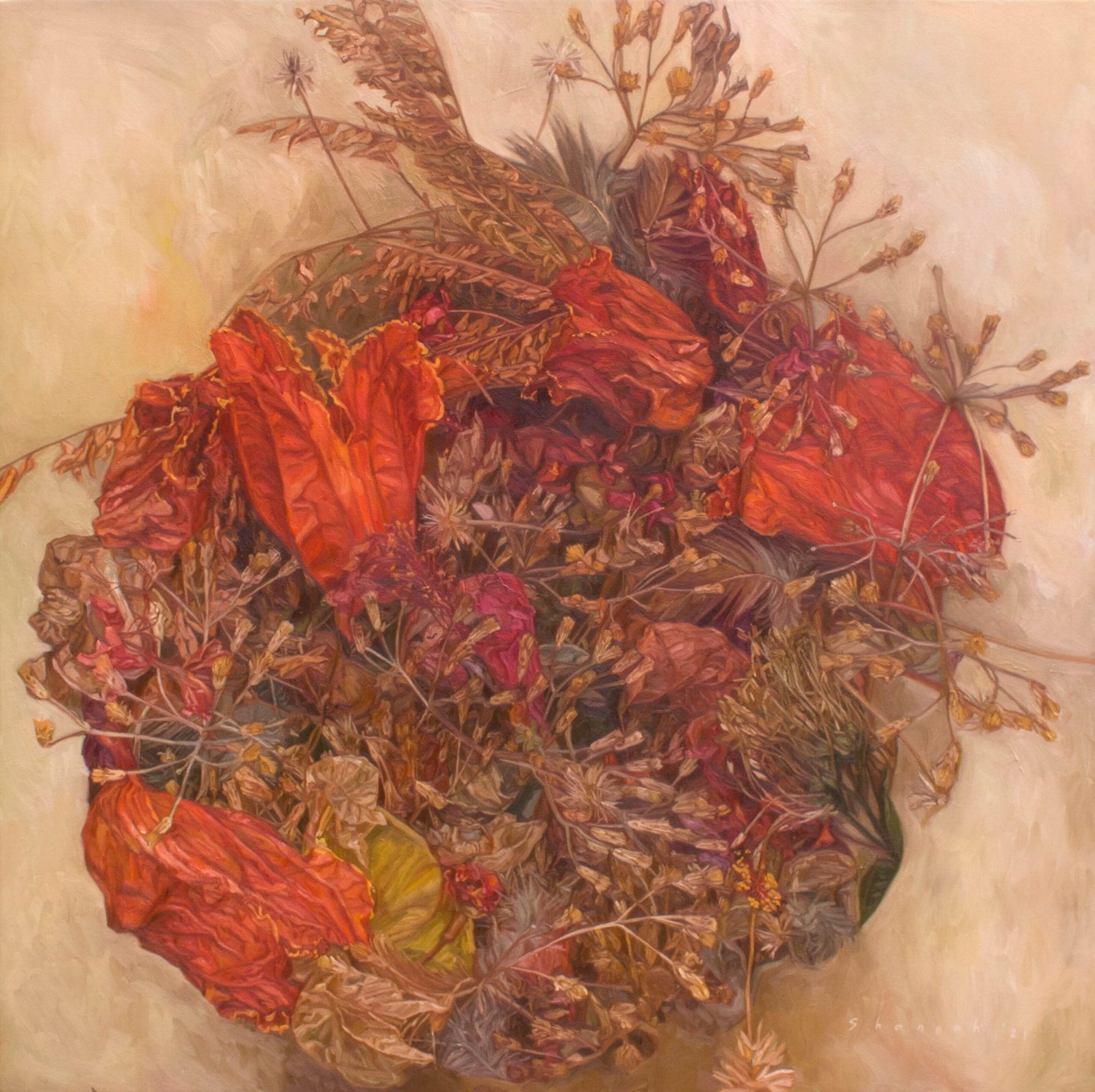
My quarantine bounty, oil on canvas. 48 x 48 in, 2021
At the entrance to the gallery, the works My quarantine bounty and A house warming gift (both 2021) are installed side by side. Clumps of dried leaves and flowers are photographed by the artist, then painted from a top view perspective. The two works with negative spaces of white and black, respectively, approximate the boxes of which the gathered flora are originally kept. Without access to Dangwa or her usual flower suppliers, Orencio recounts how she walked around her neighborhood gathering flowers and leaves in the streets and public areas during the lockdown. As Orencio found herself moving house in between quarantine, her neighbor gifted her a bunch of dried flowers as a welcoming gift. The subsequent paintings thus represent her home and neighborhood, a collection that establishes immediate place during a most isolating time.
Consequently, the works I may have broken ECQ rules (2020) also share an instance of the artist extending place. Pink bougainvillea flowers and other flora are painted in a basket, following what natural elements she found beyond her home, quipping how she may have breached community guidelines in the process. Similarly, the work A July escape (2021) with a collection of yellow bell blossoms and other dried leaves and flowers was based on a short trip to Pinto Museum where the artist lives a few minutes away, marking a time when the lockdown had briefly eased in Antipolo. While establishing the immediate environment through these found natural elements, Orencio also marks the distance she has covered with what had been gathered in rare moments of travel beyond home.


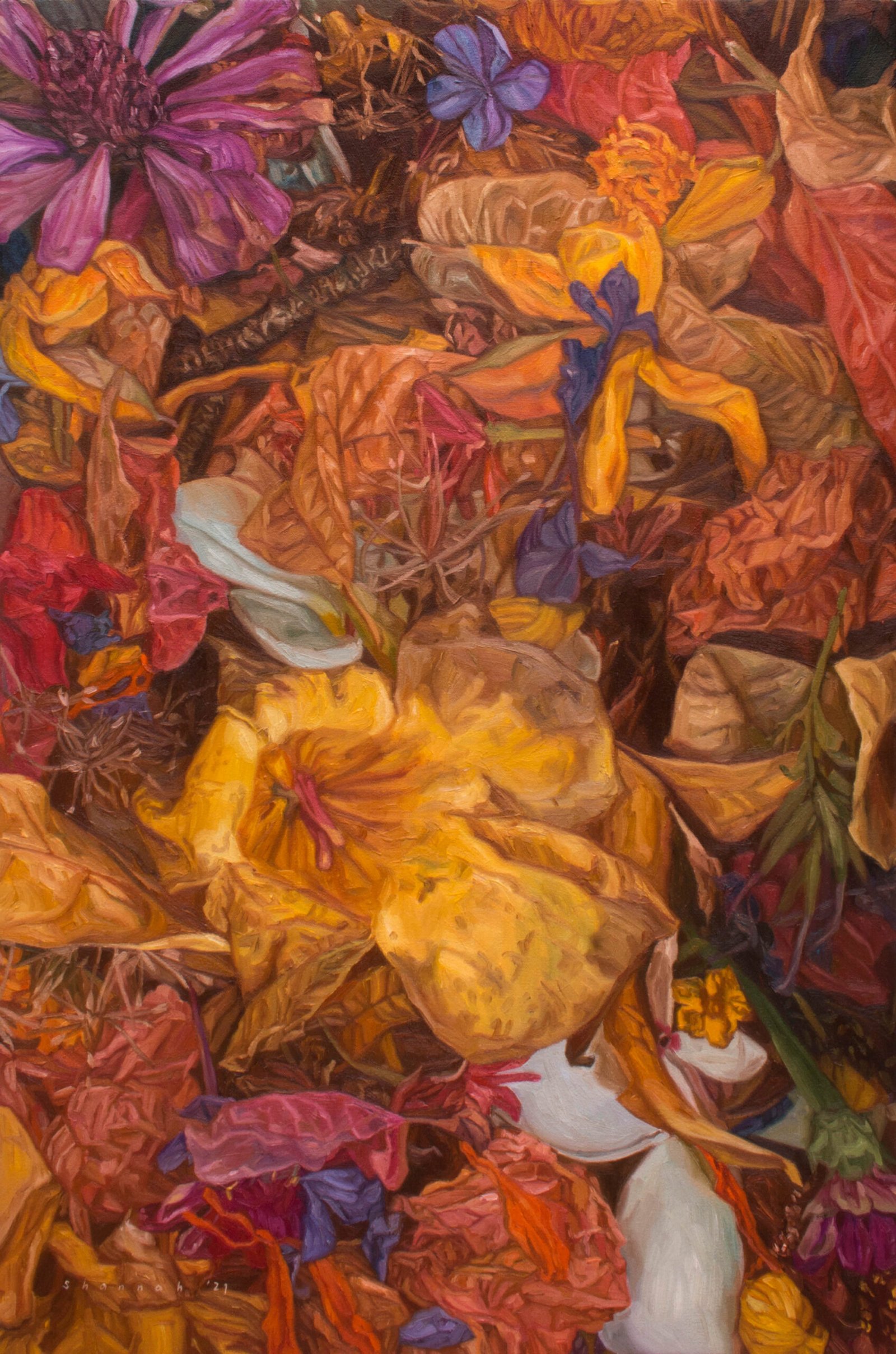

The home has been one’s permanent space during this pandemic time and the works What a shame and Fluttery things (both 2021) directly provide a glimpse of the artist’s intimate observations in confinement. Like the dried flora, carapaces of dead moths and butterflies found inside the artist’s apartment are depicted in their frailty, with brittle or broken wings. Butterflies and moths are known to be short-lived and the paintings’ titles remark on their fragility—the artist’s painting them as subjects, this time from her enclosed space, captures an episode of regret in a setting closest. Farther in the gallery are the works A mail of roses (header) and By the mushroom kween (both 2021). Illustrating stems of dried-up red roses and baby’s-breath among others, the painting tells of the bunch that was sent by her aunt through parcel. Similarly, the painting depicting gathered mushrooms, fungi, and flowers was collected by a friend, miles away abroad, photographed, and sent to the artist by email. The artist’s process of gathering thus becomes liminal, the works navigating between limitations and possibilities of physical distance and space.
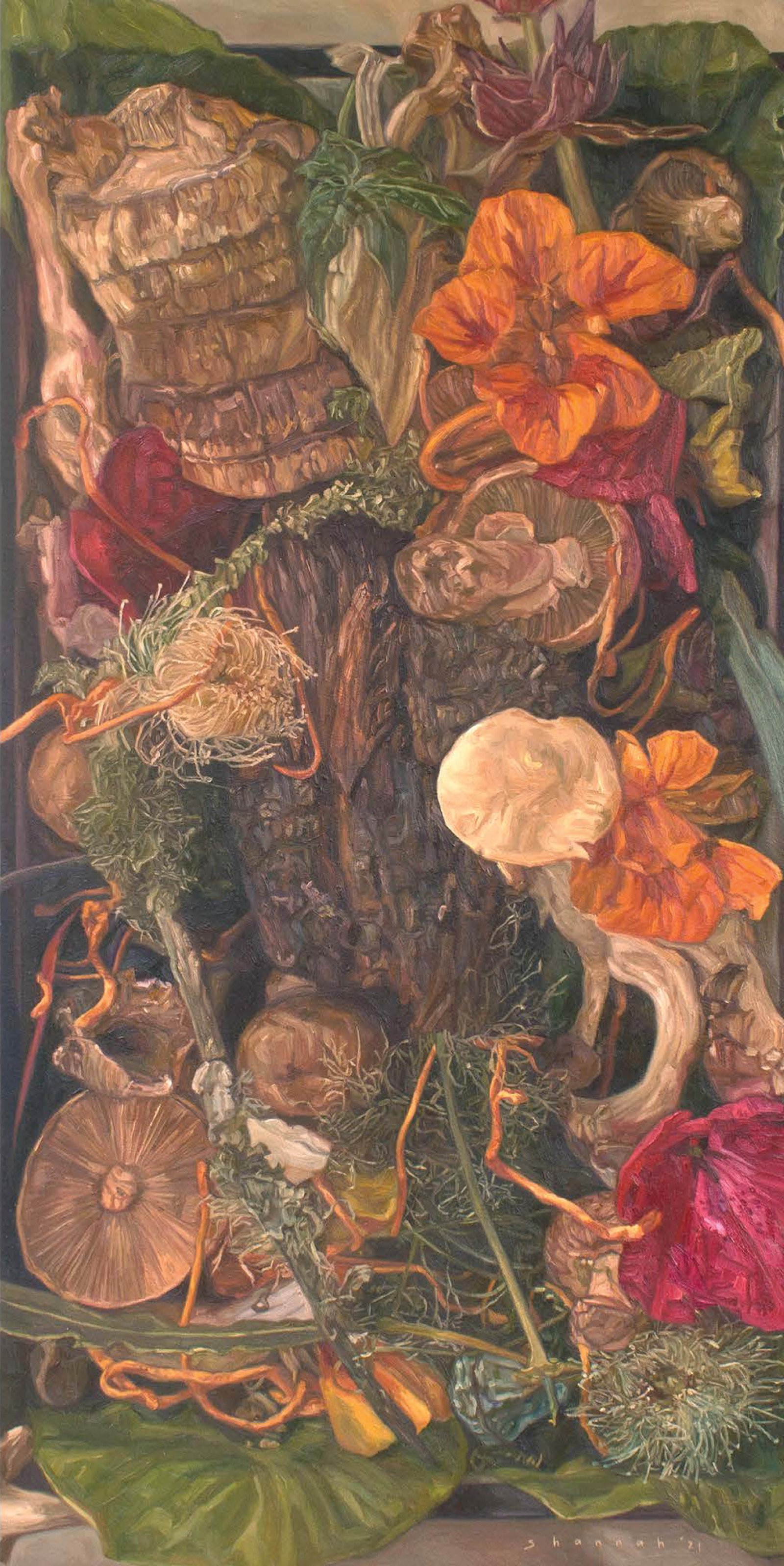

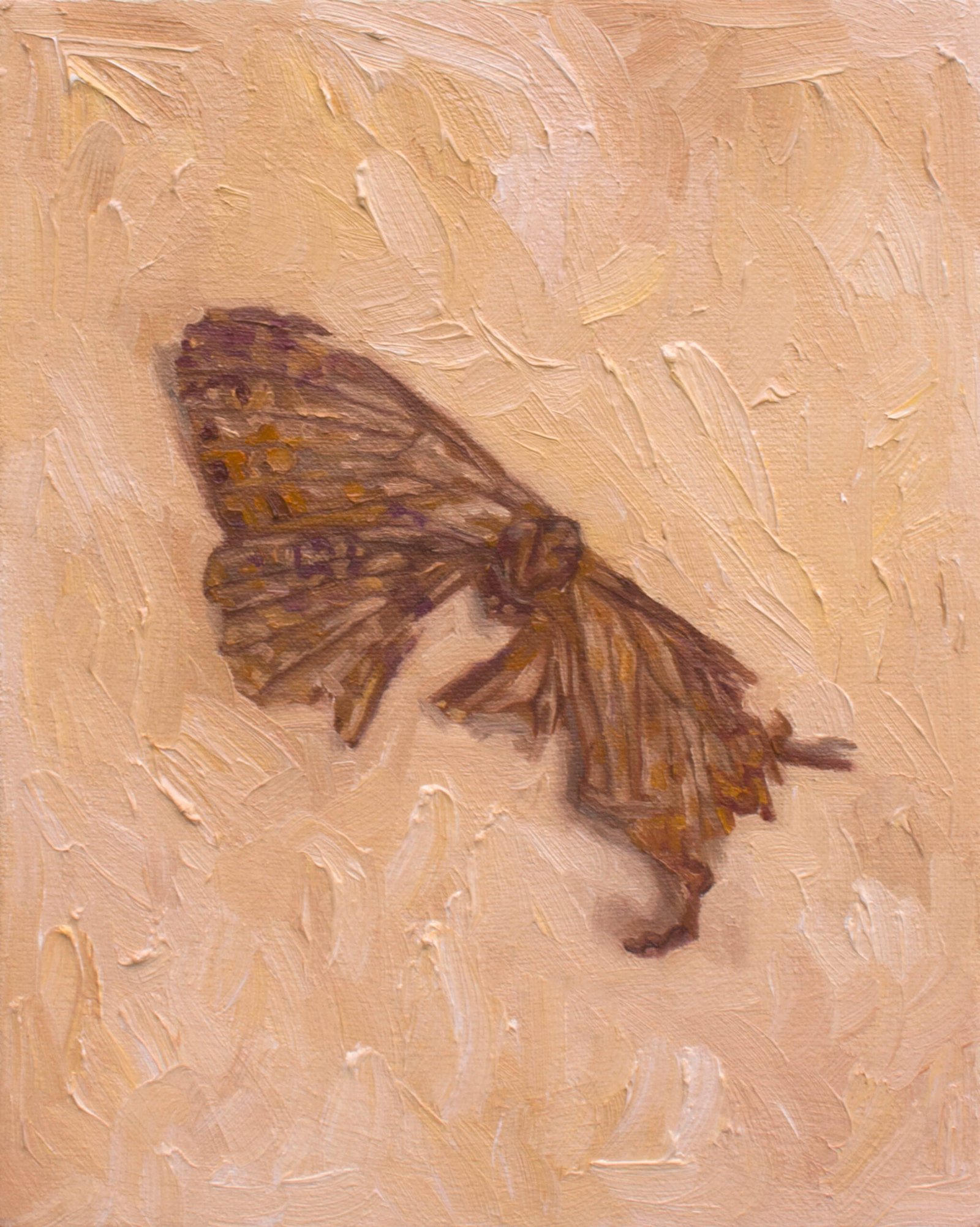
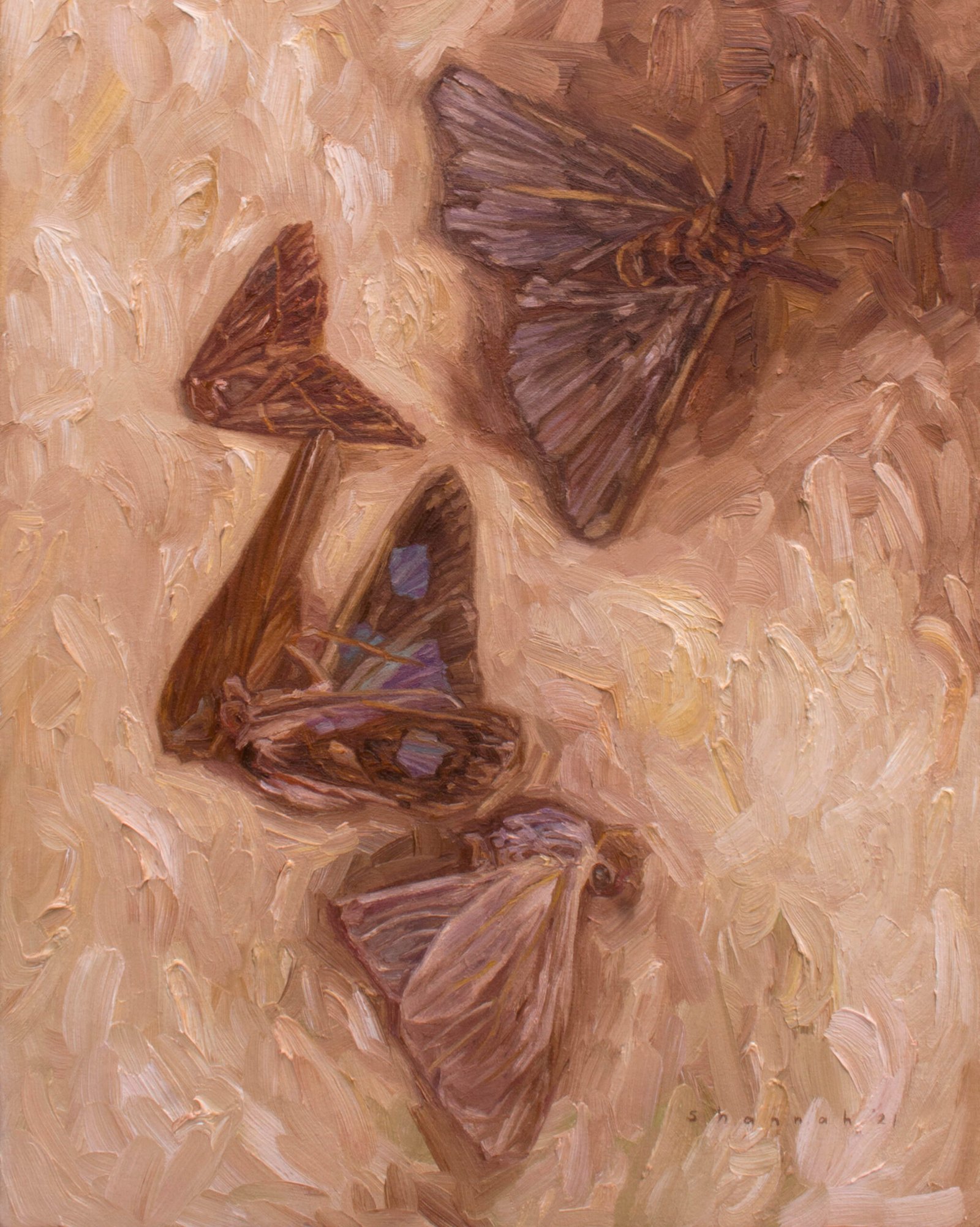
Towards the end of the gallery are works that further explore notions of connection and community. The painting Manang’s choice (2021) depicting lotus and other dried fruits and leaves, for example, shows the flora gathered by a caretaker at the museum who upon learning about Orencio’s projects, gave the artist her own bunch from the gardens. Manong’s choice (1-3, 2021) is also based on flora gathered in the museum’s grounds, this time by Dr. Joven Cuanang, the museum’s director himself who gathered leaves of mahogany, and a number of dried flowers. The paintings represent the “choices” of each person as they adopt Orencio’s practice of gathering and arranging found flora. Likewise, Orencio narrates, for the work Kaela’s choice (2021), it was the young daughter of an artist-friend who gathered the flora for the painting, the child’s curiosity imbued in the selection of colorful leaves, tiny flowers, and bundles of weeds. This act of sharing, as reflective in the communal programs and efforts that have emerged during the pandemic time, speaks of the artist’s new connections and agents of support within her emerging praxis.
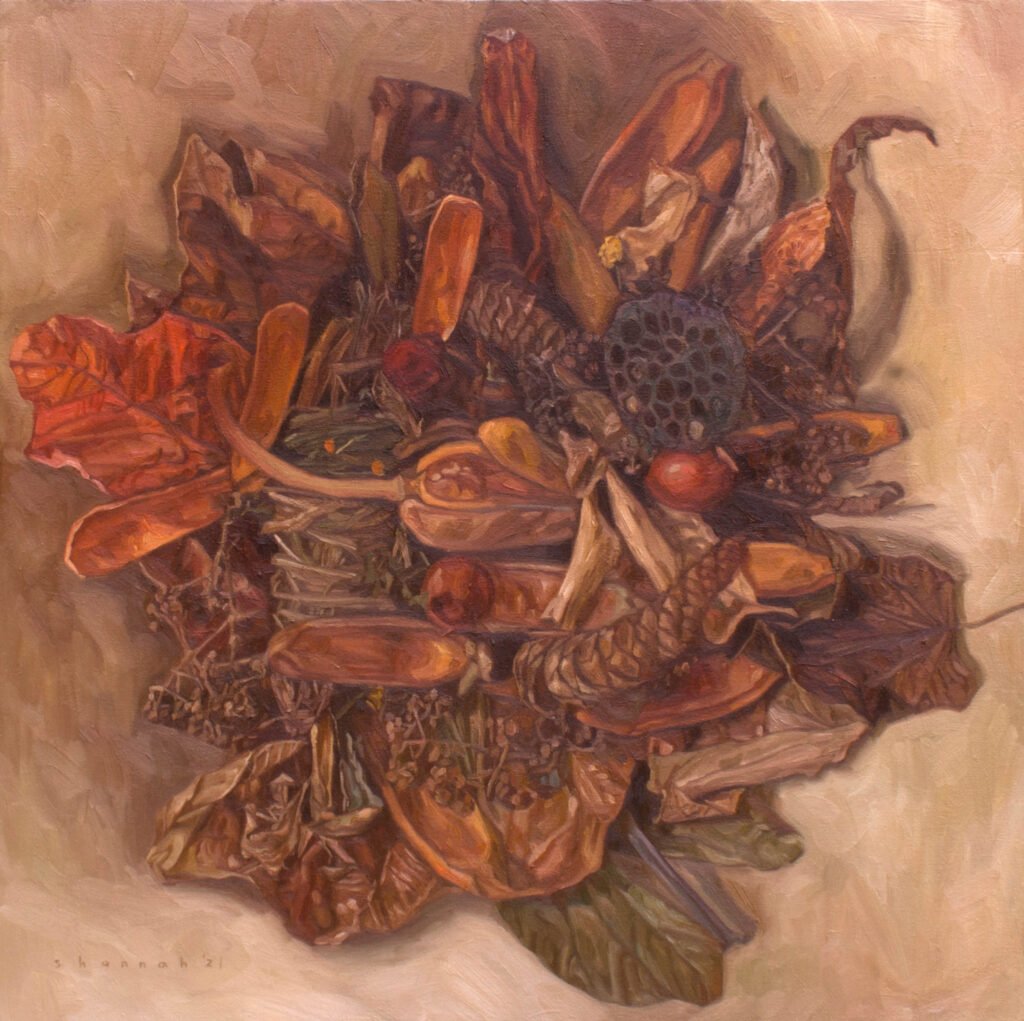

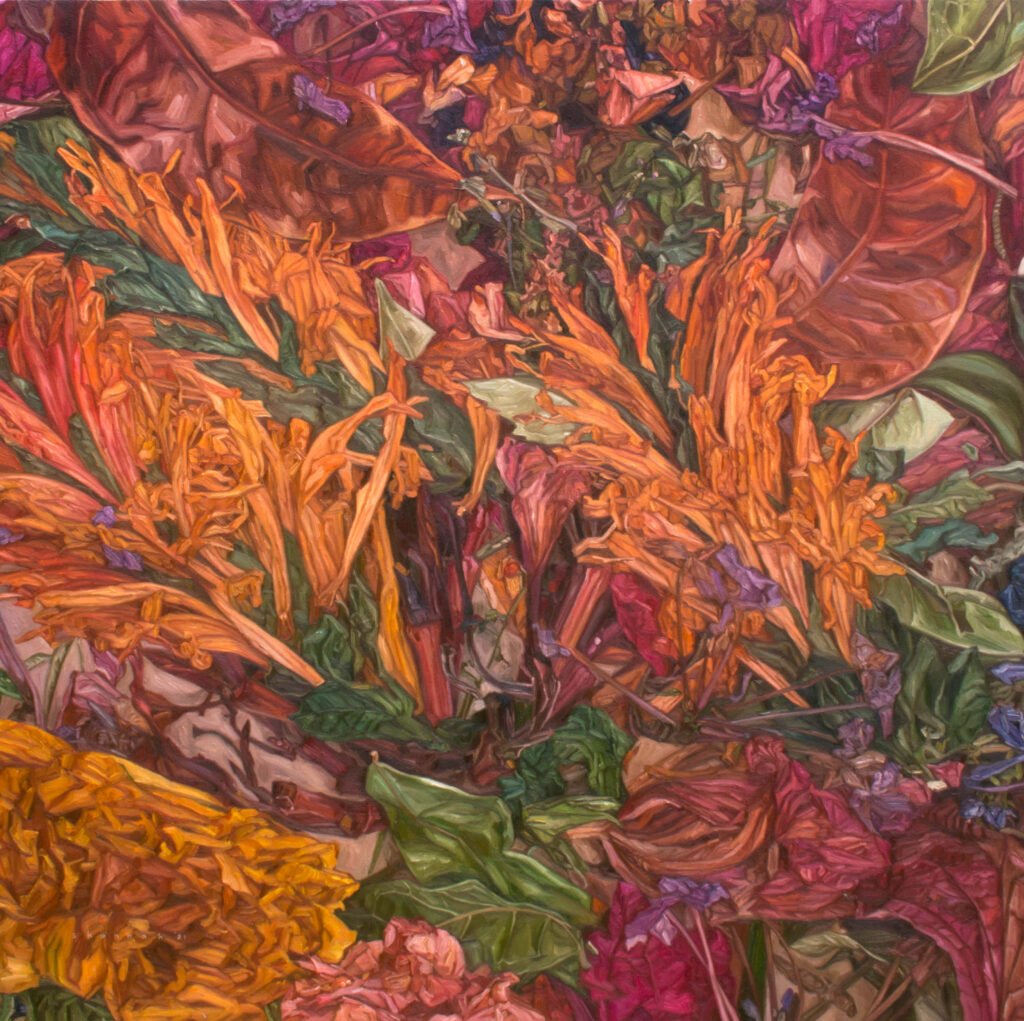

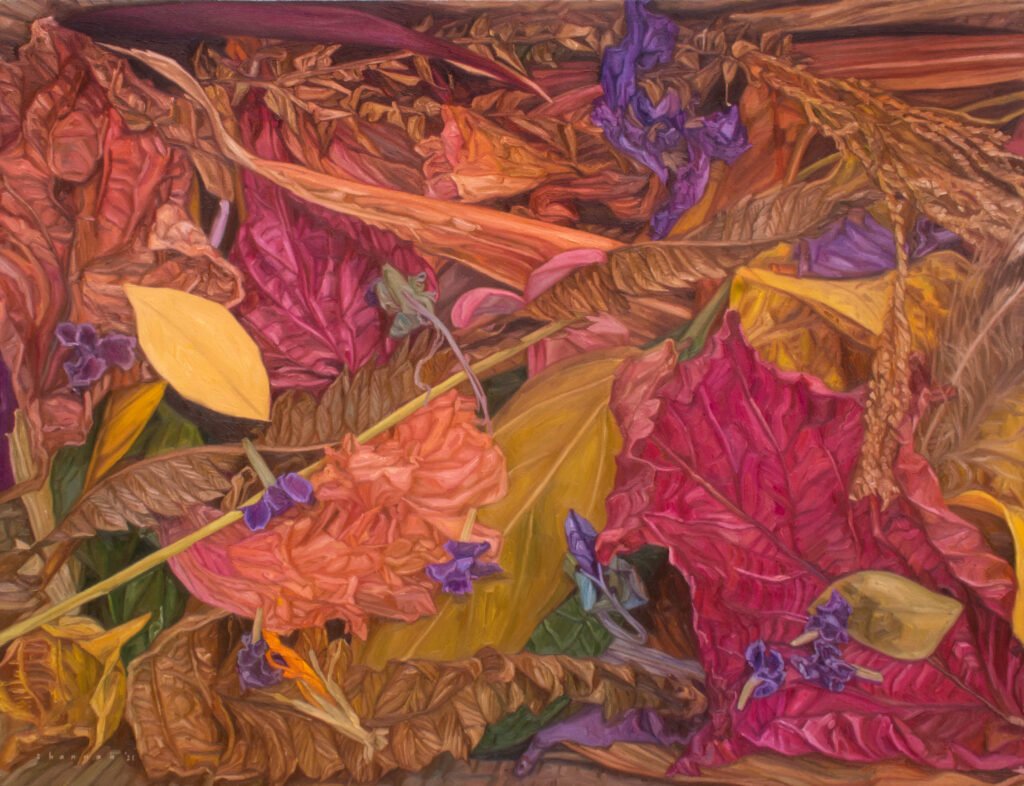

Lastly, at the center of the gallery are two large boxes filled with actual dried leaves and flowers, dead butterflies, and other found natural material. The site-specific flower boxes collect from previous exhibitions and art events of Orencio and include some taken from the museum’s grounds before the August opening. Despite their decomposing states, the artist urges that one sees their natural fragility as a referent to beauty. To safekeep them in giant boxes and placing them in the center of the exhibition might connote a reflective understanding of the nature of transience, and the admirable efforts one makes to arrest it. The artist also quips that any new flowers from the exhibition’s events shall be added to the installation, renewing its cycle of remembering and adding new memories to the pile.
In her artist statement, Orencio notes: “Flowers, leaves, twigs, and other found objects, will likely not last the test of time, as will my memories. So, in an attempt at remembering, the gathered items are stored and protected in boxes. Boxes that are then photographed and painted as a sort of repeated attempt to memorize the details of the past they represent; and in doing so, preserve them, not only tangibly in the form of paintings, but the process itself helps ingrain these moments and places and people in my head.”
While Orencio’s latest exhibition is guided by an attempt to capture, the intricacies of the works being made in the complexity of the pandemic time show the artist’s consciousness of space, its limitations and extensions, possibilities, and connections. The inconsistency of the community lockdown has directly affected Orencio’s production and even exhibition (the museum only accepts guests by appointment), yet the completed works define a specific period in the artist’s oeuvre where her process, considerations, and artistic choices find expansion. For one, the act of gathering flora, arranging them in boxes, photographing the collection, and painting the image not only shows the tenacity of an artist with a technical vision, but also reveals in itself her act of care.
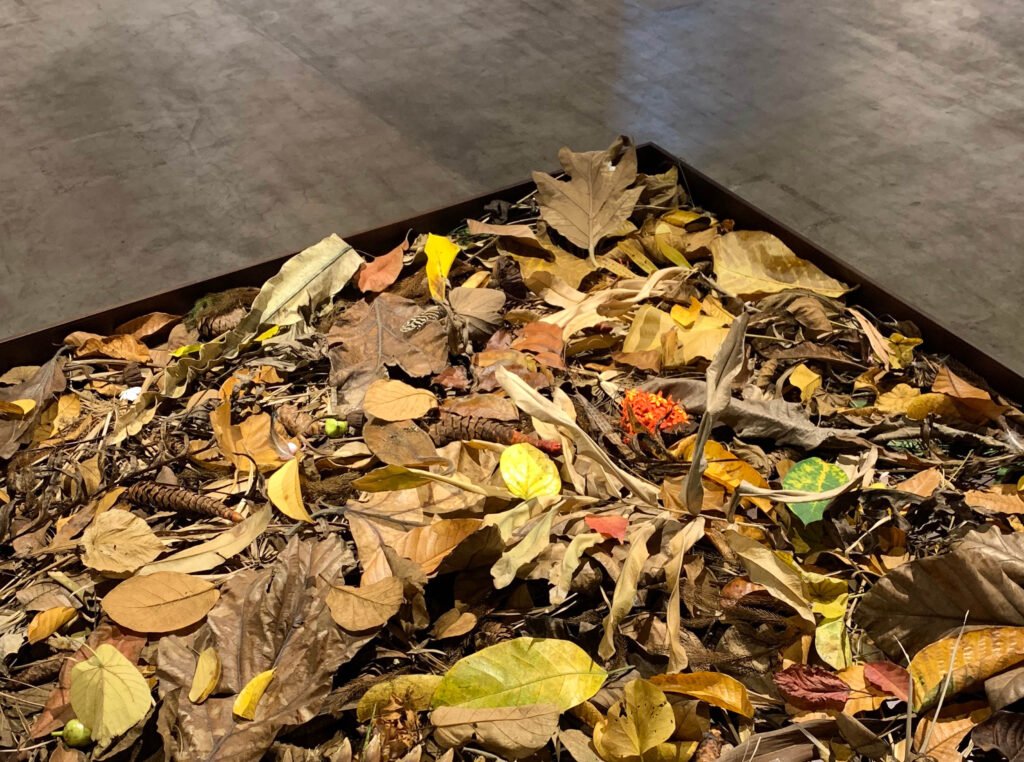

As would a curious child, Orencio’s practice and process exhibit gestures of closeness, of careful observations, and attention to personal subjects. This care extends beyond the canvas and herself, as the artist even chose painting frames that resemble boxes—allowing the audience access to the intimacy that the works carry as she herself saw them. Moreover, the dried flowers, leaves, twigs, and plants in actuality are not as colorful as the artist visually depicts, yet by consciously choosing to portray them vividly in spite of their states of decay, it imbues the work with the artist’s hopes.
Finally, having the act of gathering, arranging, and giving be practiced by friends, family, colleagues, and even strangers allows for the intimate process to be shared thereby extending the artist’s personal world. In fact, despite Orencio’s concern over losing memories and the impermanence of moments, the efforts of the artist’s collaborators reveal how plants and flowers continuously remind them of her. “Given the significance of what was and is currently happening in the world, I have come to associate the boxes with the phases in my life as I pushed through during this pandemic,” Orencio shares, “and that these boxes represent my joys and struggles and what kept me to persevere. As I look at all my pieces, I see pages from a visual diary. Each painting a narration to myself.”
The exhibition “To put, to gather, and to put together” remarks on the artist’s careful preservation of the transient human experience. Faced largely by things and events out of one’s control, Orencio’s latest works honor the humble act of gathering as a memory of our shared experiences, and that we are all in this together. •
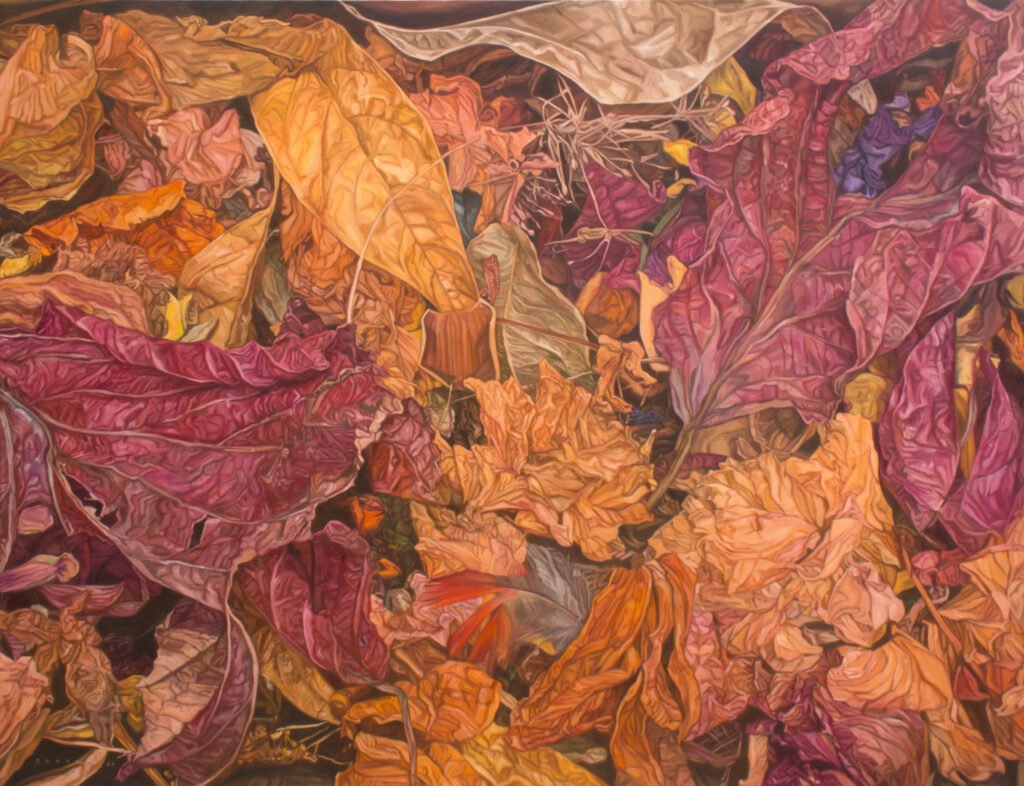

John Alexis Balaguer is an independent art manager, critic, and curator based in Manila. He is the founder of Curare Art Space, a digital space for curatorial collaboration. He was formerly operations manager and head of research at Palacio de Memoria, a heritage house turned arts and events center; curatorial writer and researcher at Ayala Museum, writing for exhibitions and publications, and acting as managing editor for the museum magazine; and gallery manager at Archivo 1984 gallery. Lex received the Loyola Schools Award for the Arts in 2012, and the Purita Kalaw Ledesma Award for Art Criticism in 2019. He currently contributes to Art Asia Pacific magazine, and Kanto.com.ph. On better days, Lex makes digital art and writes poetry.
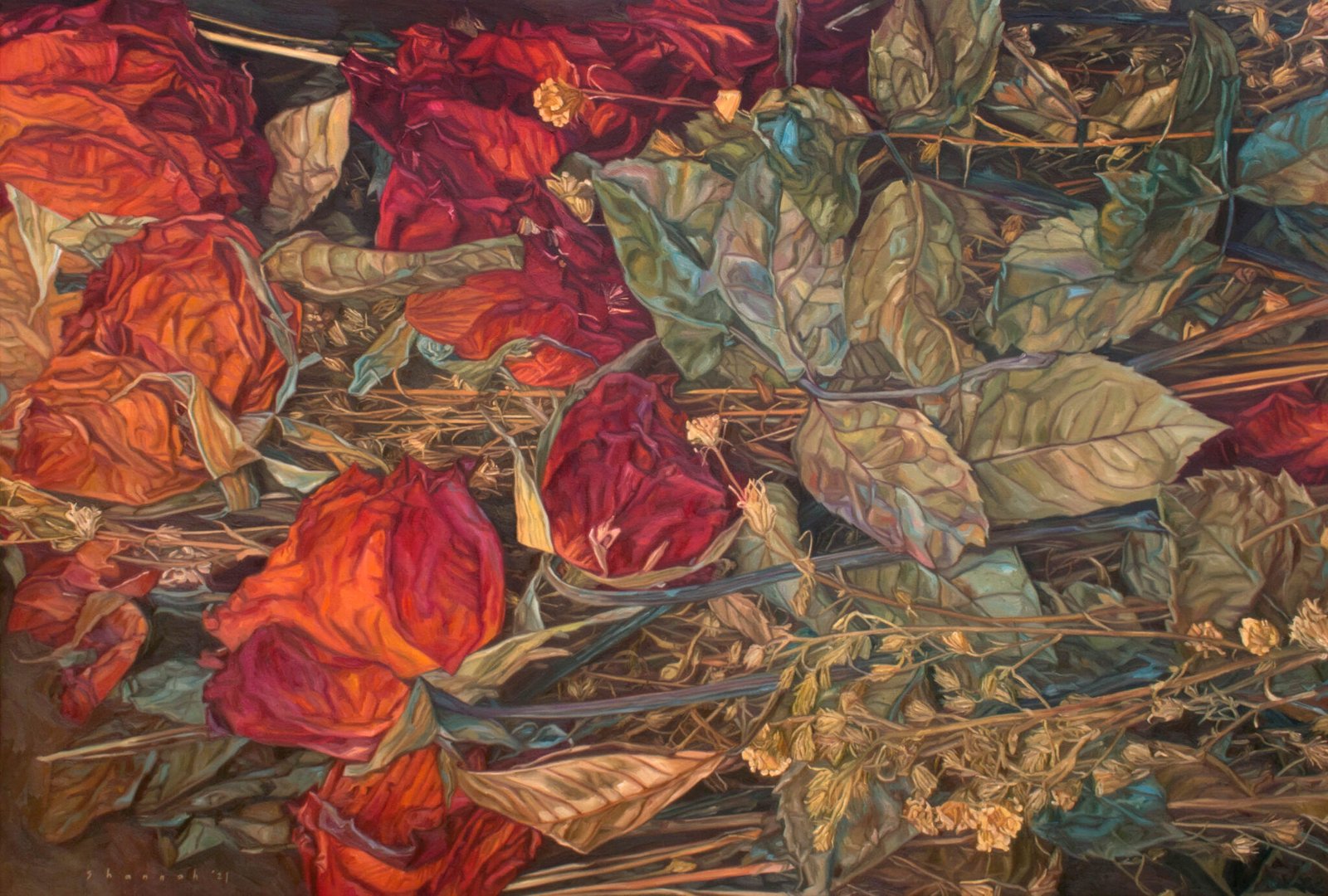


3 Responses